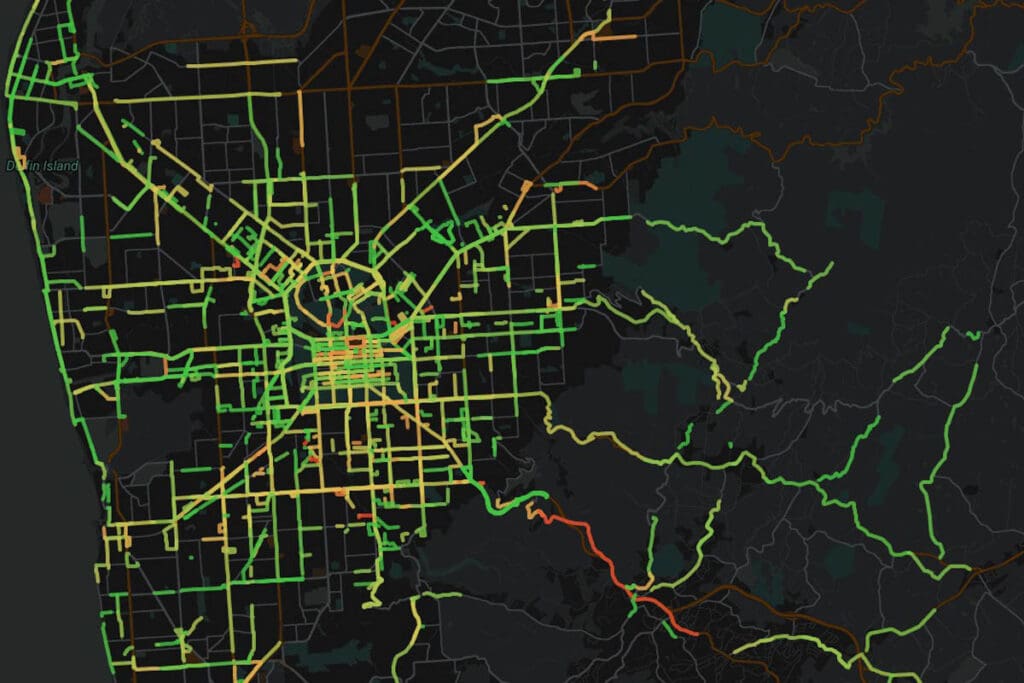Project Velograph Maps Shows Early Data for Passing Distances

Adelaide, South Australia
Member of the public can now view initial results from an Adelaide study identifying trends in close passes by cars overtaking cyclists, after an online map of the project’s data went live last month.
The Project Velograph map, collated from data from nearly 5,400 cycling journeys, shows the median passing distance across the road networks in Adelaide, Canberra and Melbourne.
It seeks to identify safest routes for cyclists, while informing future projects to make certain roads safer.
“We have not yet been able to take a deep dive into the data to seek insights, but we’re hoping to move on to that soon,” the project leader, University of Adelaide research fellow Jamie Mackenzie, said.
“There is a lot of ‘green’ on the map which is good, but there are definitely subtle differences along various roads, which is what the project was seeking to identify.
“We are hoping to evolve the public map over time so that it shows more data and various insights.”
Since the units were first deployed on 10th February, the project has collected data from 142 participants , logged 5,390 cycling journeys totalling nearly 44,000km of travel and identified more than 78,000 passing events.
Jamie and his time had been hoping to launch the map in May but encountered a few issues with processing so much data.
The study uses a unique device that has been developed inhouse by the university and utilises two sensors to measure and record vehicles overtaking the project’s volunteer cyclists.
The Velograph is mounted on the top tube of the cyclist’s bike and has a sensor built into the body of the device, as well as a rear sensor connected to the seat post or saddle. It compares data from the two sensors to identify when the rider is in motion, when they are being overtaken and the distance to the passing vehicle.
Both sensors use infrared beams capable of recording data 50 times a second, compared to 10 times per second for the ultrasonic sensors used on a similar units developed overseas.
